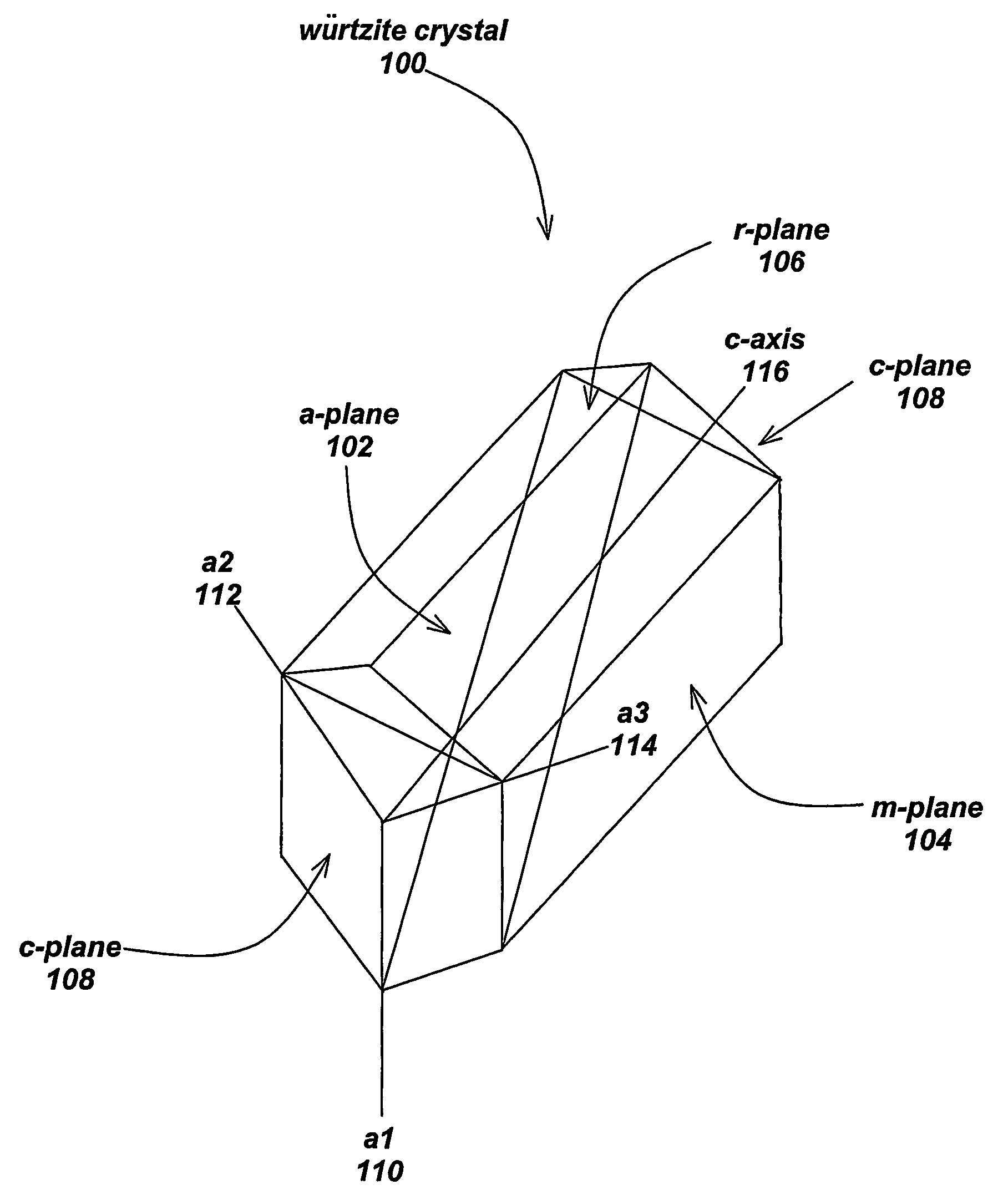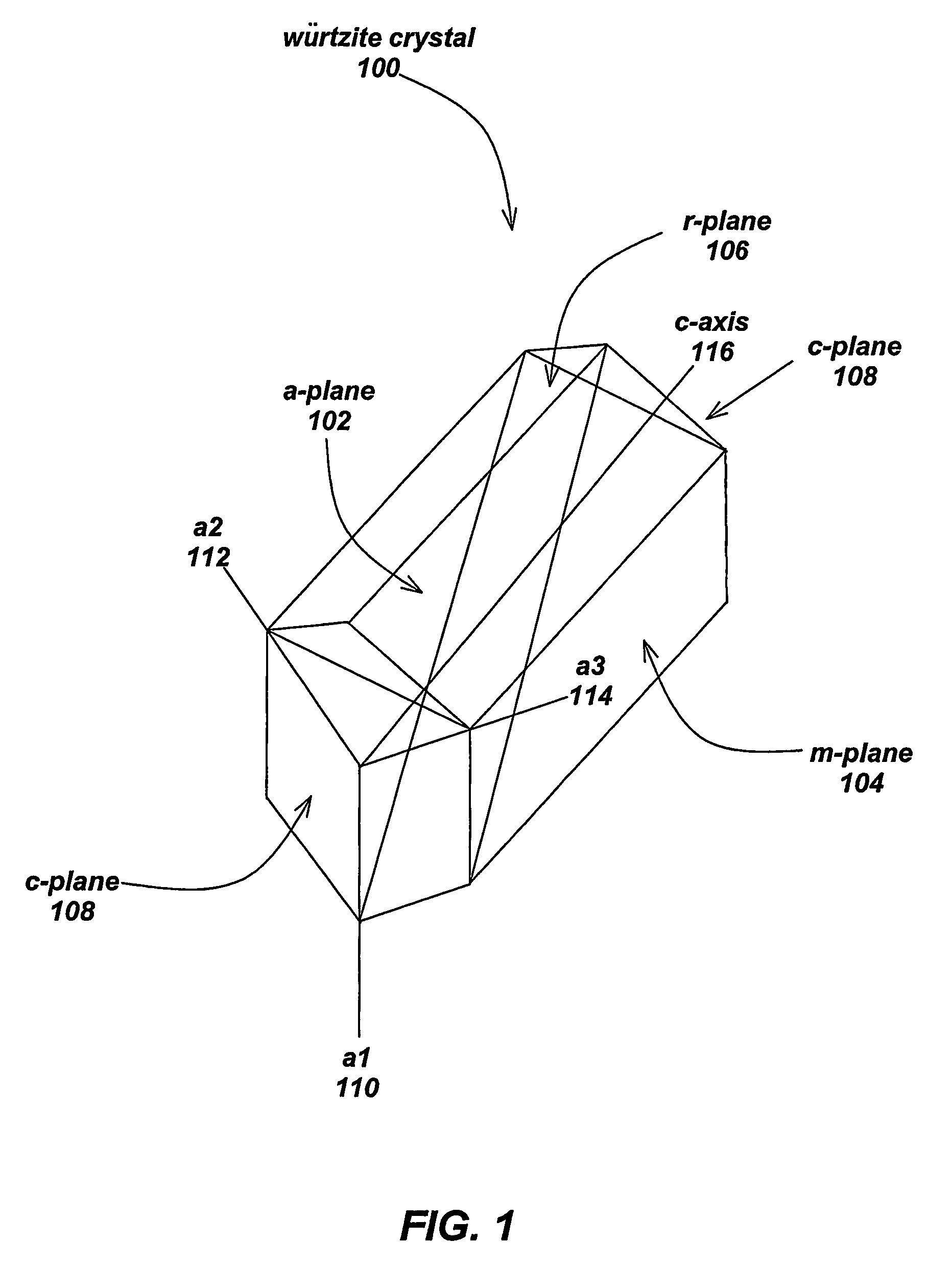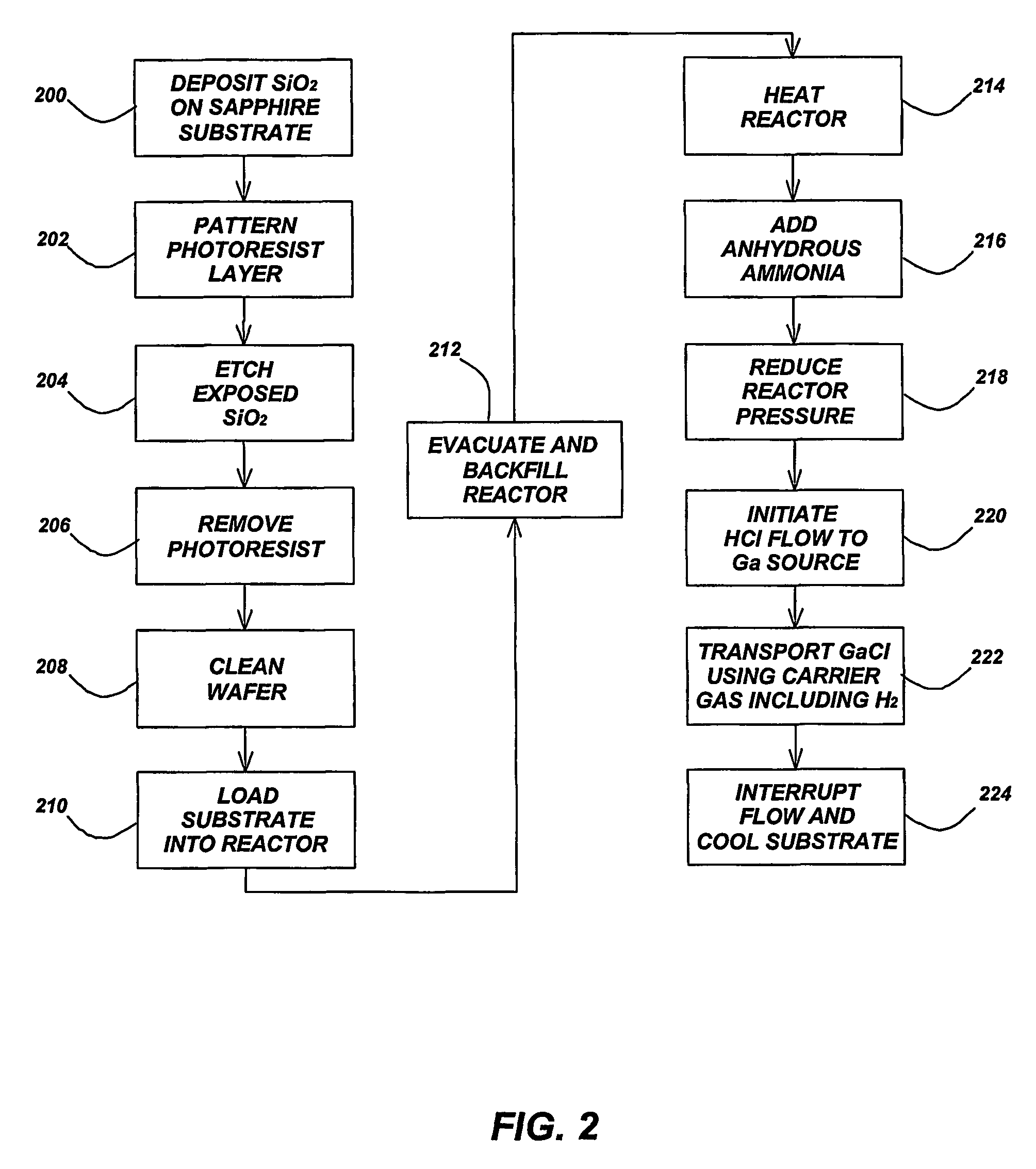Growth of reduced dislocation density non-polar gallium nitride by hydride vapor phase epitaxy
a gallium nitride and vapor phase technology, applied in the direction of crystal growth process, polycrystalline material growth, chemically reactive gas, etc., can solve the problem of further charge separation within quantum heterostructures, electron segregation and hole segregation in each layer, and the inability to simply cut a crystal, etc. problem, to achieve the effect of reducing the densities of threading
- Summary
- Abstract
- Description
- Claims
- Application Information
AI Technical Summary
Benefits of technology
Problems solved by technology
Method used
Image
Examples
Embodiment Construction
[0032]In the following description of the preferred embodiment, reference is made to the accompanying drawings which form a part hereof, and in which is shown by way of illustration a specific embodiment in which the invention may be practiced. It is to be understood that other embodiments may be utilized and structural changes may be made without departing from the scope of the present invention.
[0033]Overview
[0034]The present invention reduces threading dislocation densities in HVPE-grown non-polar, a-plane GaN films using LEO. By utilizing reduced growth pressures and a carrier gas containing a fraction of hydrogen, lateral growth of a non-polar GaN film directly off a foreign substrate can be achieved. A patterned mask is applied to the substrate through one of a variety of means. The substrate is then loaded into a HVPE reactor and the a-GaN film grows only from the regions of exposed substrate material and spreads laterally above the mask and across the substrate surface.
[0035...
PUM
| Property | Measurement | Unit |
|---|---|---|
| pressure | aaaaa | aaaaa |
| pressure | aaaaa | aaaaa |
| thick | aaaaa | aaaaa |
Abstract
Description
Claims
Application Information
 Login to View More
Login to View More - R&D
- Intellectual Property
- Life Sciences
- Materials
- Tech Scout
- Unparalleled Data Quality
- Higher Quality Content
- 60% Fewer Hallucinations
Browse by: Latest US Patents, China's latest patents, Technical Efficacy Thesaurus, Application Domain, Technology Topic, Popular Technical Reports.
© 2025 PatSnap. All rights reserved.Legal|Privacy policy|Modern Slavery Act Transparency Statement|Sitemap|About US| Contact US: help@patsnap.com



